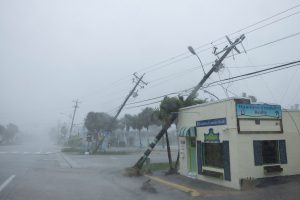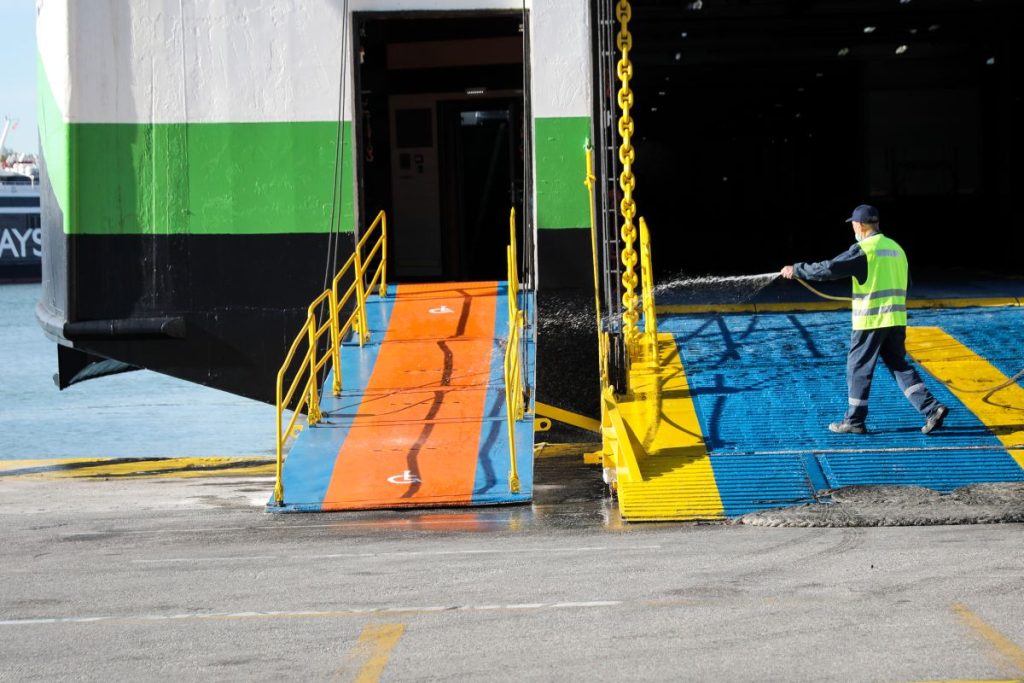ORLANDO, Fla.—Hurricane Milton churned across Florida with heavy winds, rain and tornadoes, cutting a destructive path that left millions without power but also appeared to spare the state from some of the worst feared outcomes.
The storm hit near Siesta Key, Fla., in Sarasota County Wednesday night around 8:30 p.m. ET as a Category 3 hurricane, the National Hurricane Center said. Maximum sustained winds were estimated at 120 miles an hour.
After cutting across the state overnight, Milton was pulling away from Florida’s east coast Thursday morning as a Category 1 storm with 85 mph winds, as of the hurricane center’s 8 a.m. update.
Milton caused serious destruction and damage, Florida Gov. Ron DeSantis said Thursday in a news conference, noting that the extent would be better understood later Thursday.
“The storm was significant, but thankfully, this was not the worst-case scenario,” he said.
More than 3.3 million customers in Florida were without power Thursday morning, according to PowerOutage.us—more than a quarter of the connections it tracks in the state.
Before making landfall, Milton hammered Florida with several inches of rain, powerful winds, storm surge and tornadoes—including two that killed four people in the southeastern county of St. Lucie, the medical examiner said.

A view shows a collapsed construction crane that fell on the building that also hosts the offices of the Tampa Bay Times, after Hurricane Milton made landfall, in downtown St. Petersburg, Florida, U.S. October 10, 2024. REUTERS/Octavio Jones
DeSantis said it was too soon to tell how many people died in the storm. “We have not confirmed any. That does not mean there has not been any,” he said.
The National Weather Service on Wednesday issued Florida a record number of tornado warnings, which indicate a twister has been spotted or detected by radar. The storm is likely to have exacerbated the devastation wrought by Hurricane Helene, which tore a path of death and destruction across several states in late September.
Residents around Florida’s west coast have been advised by county and emergency-management agencies to continue to shelter in place, stay off the roads and avoid wading into receding water.
Tampa avoids worst-case scenario
Tampa Bay was spared a direct hit, allaying some fears of catastrophic damage to coastal communities there. The area, which is densely populated and has seen booming development on low-lying ground, is still expected to see significant effects.
In the bayside city of St. Petersburg, footage showed the storm had shredded the roof of Tropicana Field, home of the Tampa Bay Rays, while city authorities said a construction crane collapsed downtown.
No injuries were reported in either incident.
Storm-surge warnings were lifted for the Tampa Bay area, which earlier had braced for a rise of up to 9 feet, though warnings were still in place farther down the Gulf Coast and along the northern half of eastern Florida.
Tampa Mayor Jane Castor said the city was fortunate the storm surge wasn’t as severe as anticipated.
“One of the blessings for us is that we didn’t see that predicted storm surge, so that saved a lot,” she said at a news conference Thursday.
Hurricane and tropical-storm warnings for the state’s west coast had ended, the National Hurricane Center said, as dawn promised a clearer look at the scale of the destruction.

A view shows a fallen traffic light near a police car, after Hurricane Milton made landfall in Florida, in Orlando, Florida, U.S., October 10, 2024. REUTERS/Jose Luis Gonzalez
Several counties had reported damage from tornadoes before the storm made landfall, DeSantis said, with 19 touchdowns confirmed across Florida.
Tampa International Airport, St. Pete-Clearwater International Airport and Orlando International Airport remained closed. More than 2,200 flights within, into, or out of the U.S. were canceled Thursday, according to FlightAware .
Tourist attractions such as Walt Disney World , Universal Studios, Tampa’s Busch Gardens and Orlando’s SeaWorld said they would close ahead of the storm.
Waffle House, whose tally of restaurant closures is often considered an informal bellwether of the severity of a storm, said on X Wednesday that it has closed dozens of locations in the Tampa, Fort Myers and Orlando areas, as well as some on the state’s east coast.
Widespread evacuations ordered
Officials from city mayors to President Biden pleaded with residents Wednesday to evacuate while they still had the chance. Mandatory evacuations were ordered for parts of nearly every county along the western coast of Florida’s peninsula.
DeSantis said Wednesday that more than 55,000 people had evacuated to shelters. In Hillsborough County, which includes Tampa, six of 17 shelters were full hours before Milton made landfall, according to the county’s website. Three of 14 shelters in Sarasota County were at capacity Wednesday evening.
Almost a quarter of gas stations across Florida were out of fuel Wednesday evening, according to GasBuddy. In the Tampa and St. Petersburg area, more than 60% had run dry, GasBuddy said.
Inga Nash, an insurance underwriter in St. Petersburg, said she started preparing her home on Monday for Milton’s arrival, boarding up windows and filling sandbags to stop water from coming in. Helene left water halfway up her driveway, but spared her home.
Nash, along with her husband and two children, left the house, which is in a mandatory evacuation zone, on Wednesday. They drove about 20 minutes to her in-laws’ home, which is on higher ground and not in an evacuation zone.
“When we left, I was very worried, not knowing what we’re going to come back to,” the 32-year-old said Wednesday. “The unknown is what’s very frustrating.”
In the Orlando area, downtown parking garages were filled to capacity with vehicles stashed by residents hoping to protect them, and hotels were fully booked. At the Omni Orlando Resort at ChampionsGate, the lobby on Wednesday afternoon teemed with families who evacuated their homes and linemen who were preparing for poststorm repairs.
Trey and Kim Carswell, both 48 years old, sat in one corner playing a game of dominoes with their 15-year-old daughter to pass the time. The couple, Tampa residents and lifelong Floridians, are accustomed to hurricanes and have stayed put for most storms.
But this time was different, they said. Milton was heading toward Tampa Bay, and Helene had sent 4 feet of water into Trey’s mother’s home. The family evacuated along with Trey’s mother and two of her friends, as well as a Labrador and a poodle.
“After Helene, and seeing all our friends lose a lot from the storm surge, we just decided it was best to pack up and be safe,” Kim Carswell said.
Write to Victoria Albert at victoria.albert@wsj.com , Arian Campo-Flores at arian.campo-flores@dowjones.com and Nicholas Hatcher at nicholas.hatcher@wsj.com






